
September 12, 2024
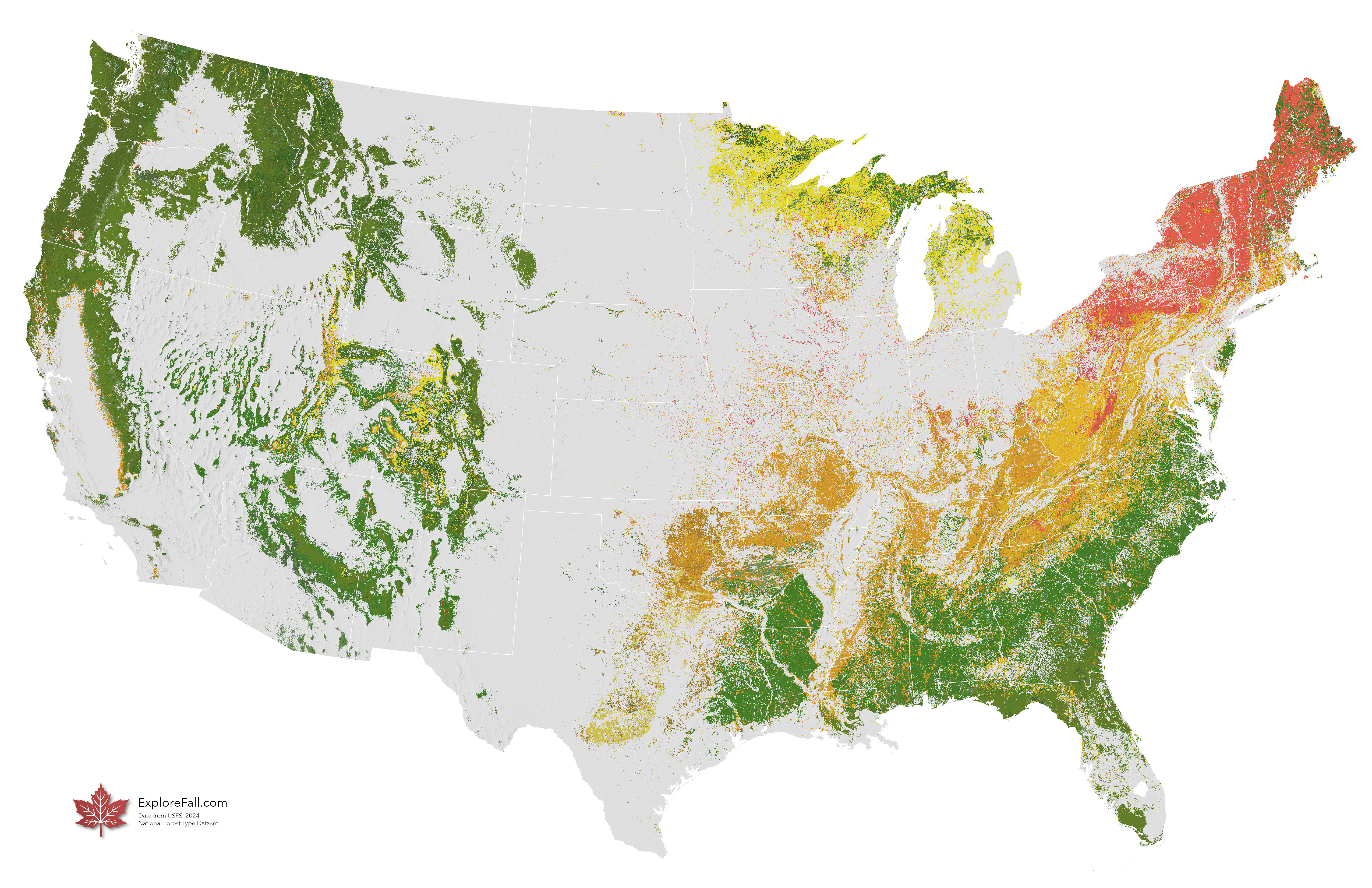
We’ve created this visualization to show the colors that the forest will turn during peak colors in the fall. These colors are an approximation, using the best data we have available about the species makeup of the forests. Forests always have variation. Colors can vary tree to tree, even within the same species. For example, sugar maples may show a bright red or a dark maroon, even if the trees are standing right next to each other. Additionally, a red maple forest may have birch (yellow), spruce (dark green), and oak (dark orange) trees scattered throughout or in small stands. The colors in this map represent the average color of the forest type, and our best guess (a well informed guess!) to what a landscape will look like.
Here’s an overview of the lower 48 states in the USA. The distinct colors are immediately obvious in the east and northeast. They range from reds which represent the maple forests of the northeast, to the oranges of the mid-atlantic and southeast, to dark greens and yellows for the evergreen forests mixed with birch and aspens in the west. An enormous amount of variation exists!
This map is only to show what color peak foliage will look like in these locations. It does not incorporate year-to-year variations of timing, foliage stress from drought, and other variables. Be sure to track the timing of this year’s peak foliage with our forecast map.

The forests are divided into two major groups: the softwood (generally known as evergreen) forests dominated by coniferous trees such as pine, spruce, firs, etc; and the hardwood (deciduous/broadleaf) forests which lose their leaves in the winter and are what turn into the autumn foliage colors that we know and love.
A notable exception to these generalized forest groups is the larch tree. Found mostly in the Pacific Northwest, the larch is a deciduous conifer tree. It has the appearance of a standard coniferous evergreen in the summer, but the needles turn yellow in the autumn and fall off the tree in the winter.
The forests are filled with many such complexities, and there are many other secrets to discover across the United States.
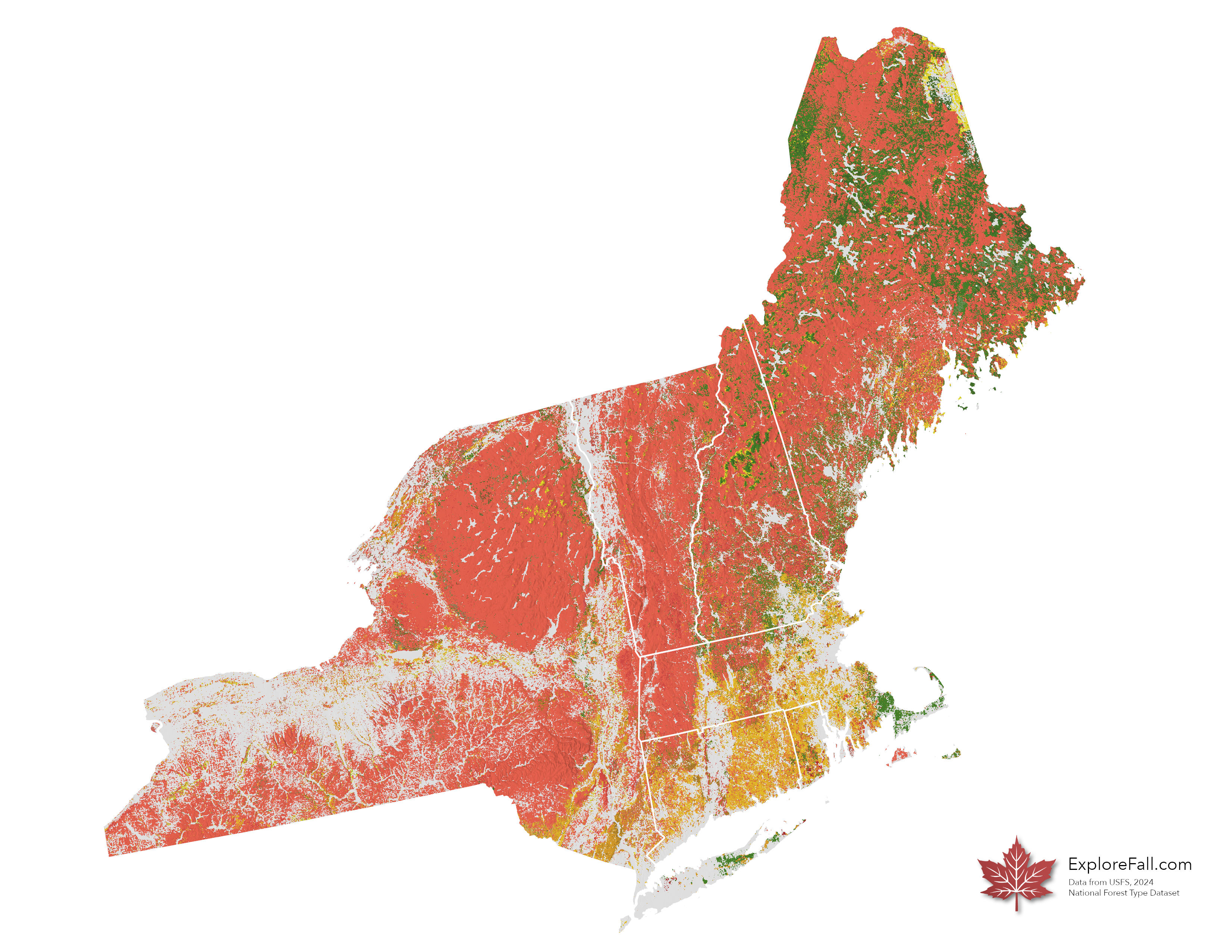
The northeastern states are dominated by maples. The two primary maple species, sugar maples and red maples, both turn brilliant red in the autumn. Tree-to-tree variation may also show shades of purple and orange. In the northeast, especially the Adirondacks in New York and the White Mountains in New Hampshire, entire mountain ranges and valleys will be covered with these vibrant maple colors.
There are more than just maples too. Aspens and birch can be found in the higher elevations which bring splashes of bright yellows. Further south, oaks, elms, hickory, and other hardwoods create a pleasant mix of oranges, yellows, and reds along the coastlines and southern hills.
At peak color, New England is one of the best places on the planet to experience fall colors. In a good year with low foliage stress, you can drive from New York to Maine with an unbroken wall of spectacular autumn vistas. Additionally, easy access to the major population centers on the coast means that many people can experience the colors within an easy day’s drive.
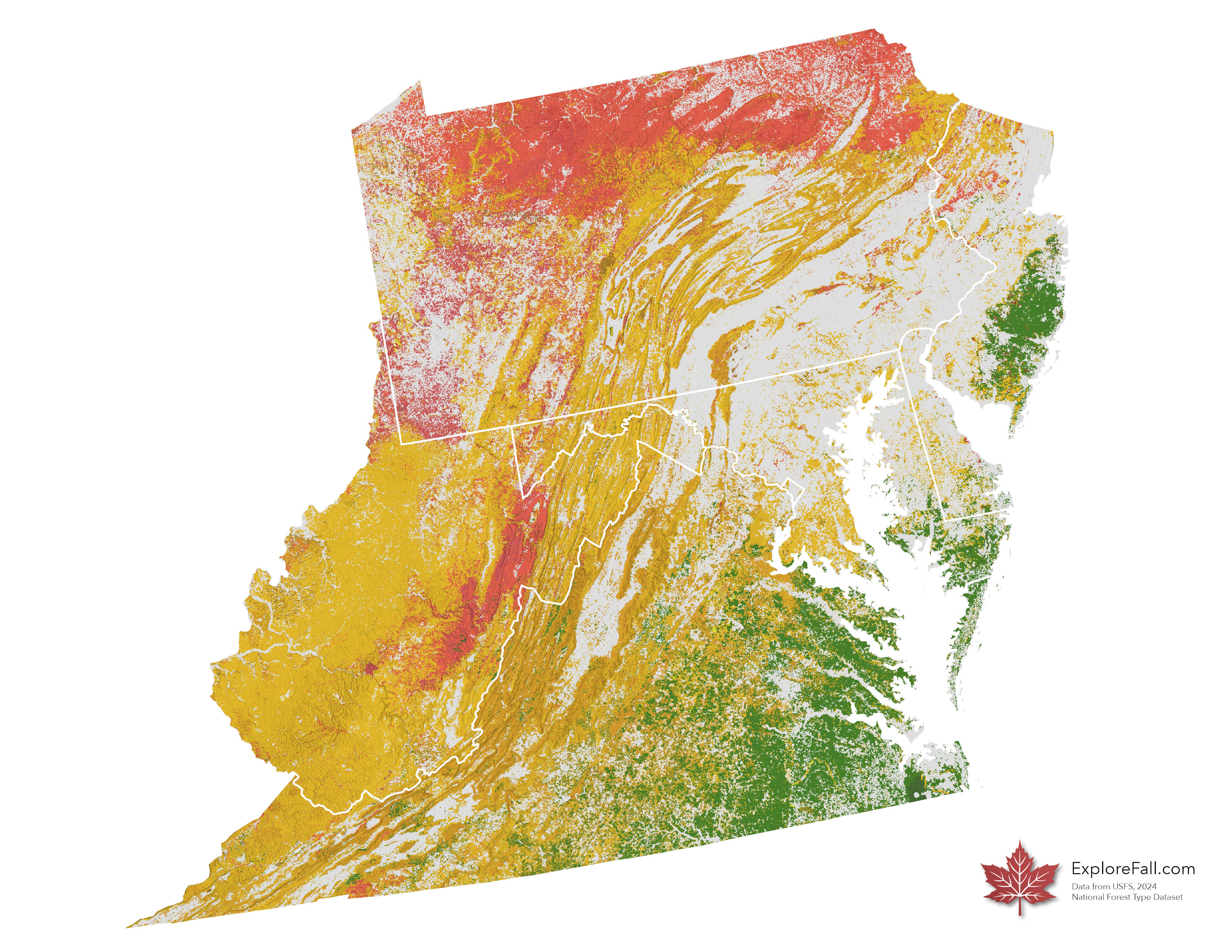
The Mid-Atlantic offers a wide arrangement of colors to explore. This region contains the most diverse range of colors and forest types in the country.
A rich maple forest extends across northern Pennsylvania, an extension of the ecosystem found in New England and Southern Canada. Further south in Central Pennsylvania, Maryland, and West Virginia, the forests transition. The slopes of the Allegheny mountains are dominated by sweetgum, yellow poplar, and white oaks. These forests turn shades of bright orange and yellow, punctuated by soft reds with stands of maple and cherry.
Further south, an increase in geologic diversity also leads to an increase in the range of colors that can be found across Virginia and West Virginia. The Allegheny Highlands in West Virginia contain an island of the Canadian ecosystem with bright maples and birch in the high elevation hardwood forests.The Shenandoah Valley and Blue Ridge Mountains in Virginia are rich, oak-dominated forests which turn orange and dark yellow. In hard years, these regions have brief windows of autumn foliage, and may only turn shades of faded yellow or brown. However, in years with abundant water and cool fall evenings, the wide vistas of Virginia and West Virginia offer a classic experience of beautiful Appalachian yellow and gold.
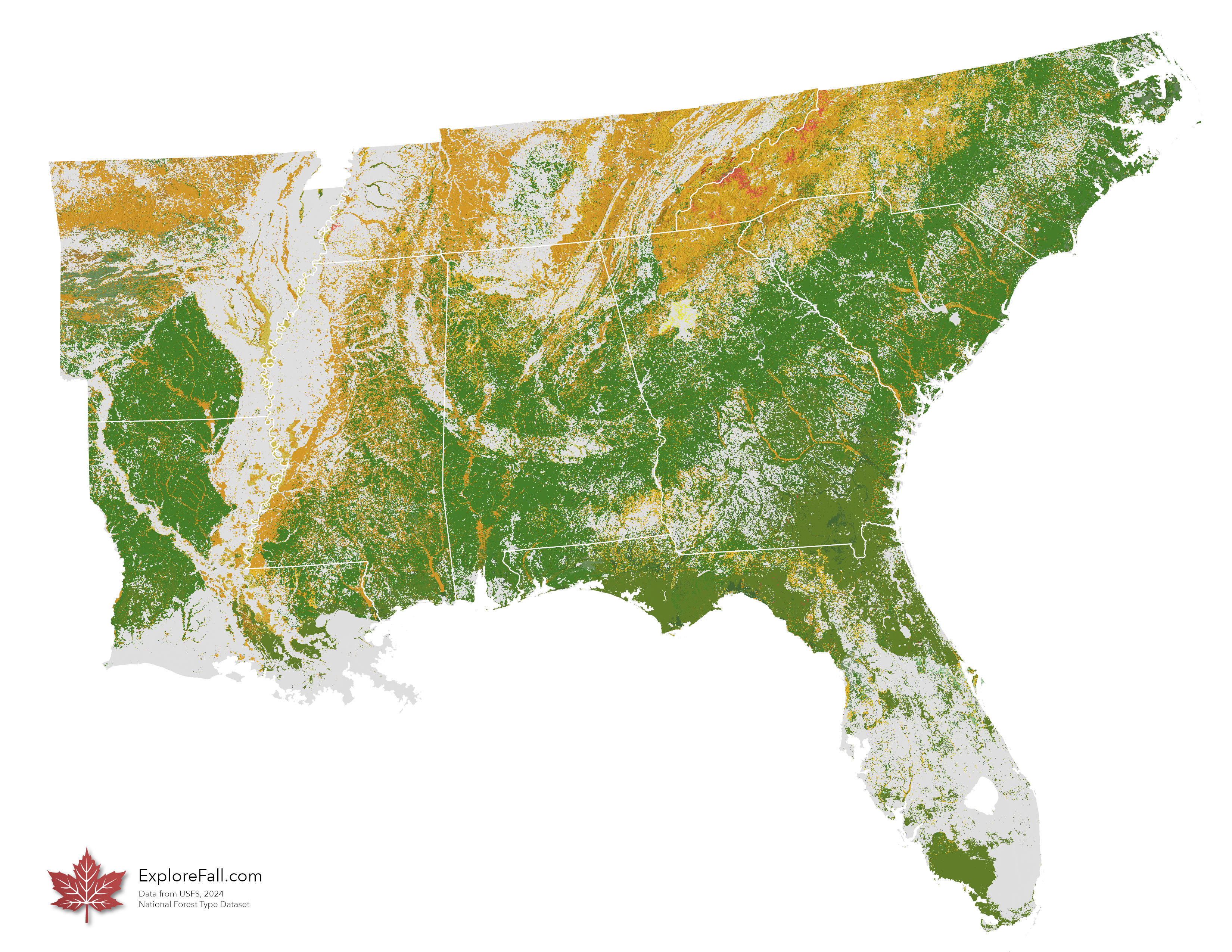
The southeast is dominated by broad, flat coastal plains with sandy soil. This is the most abundant part of the country for softwood forest agriculture, but that doesn’t translate into much fall color.
The coastal plains of the southeastern states are primarily pine, oak, sweetgum, hickory, and more swampy/flat forests. Dark gold and yellow colors are the most dominant colors where hardwood forests grow along rivers and fields, especially in the Carolinas and Tennessee. The Ozarks in Arkansas may be the best place to see these gold and yellow colors. Beautiful vistas and plenty of water and terrain variation gives the forests a rich vibrancy, some of the richest along the Mississippi River corridor.
The crown jewel of the southeast is the Great Smoky Mountains national park and the Blue Ridge Mountains in the Carolinas, Tennessee, and Georgia. The steep slopes are predominantly oak forests mixed with yellow poplar, and hickory. The slopes of the mountains turn rich gold and yellow, even in dry years. Pockets of bright red maples and scarlet oaks can be found in the higher elevations where temperatures drop low in the early fall. Higher elevations are the best places to find color in the Southeast.
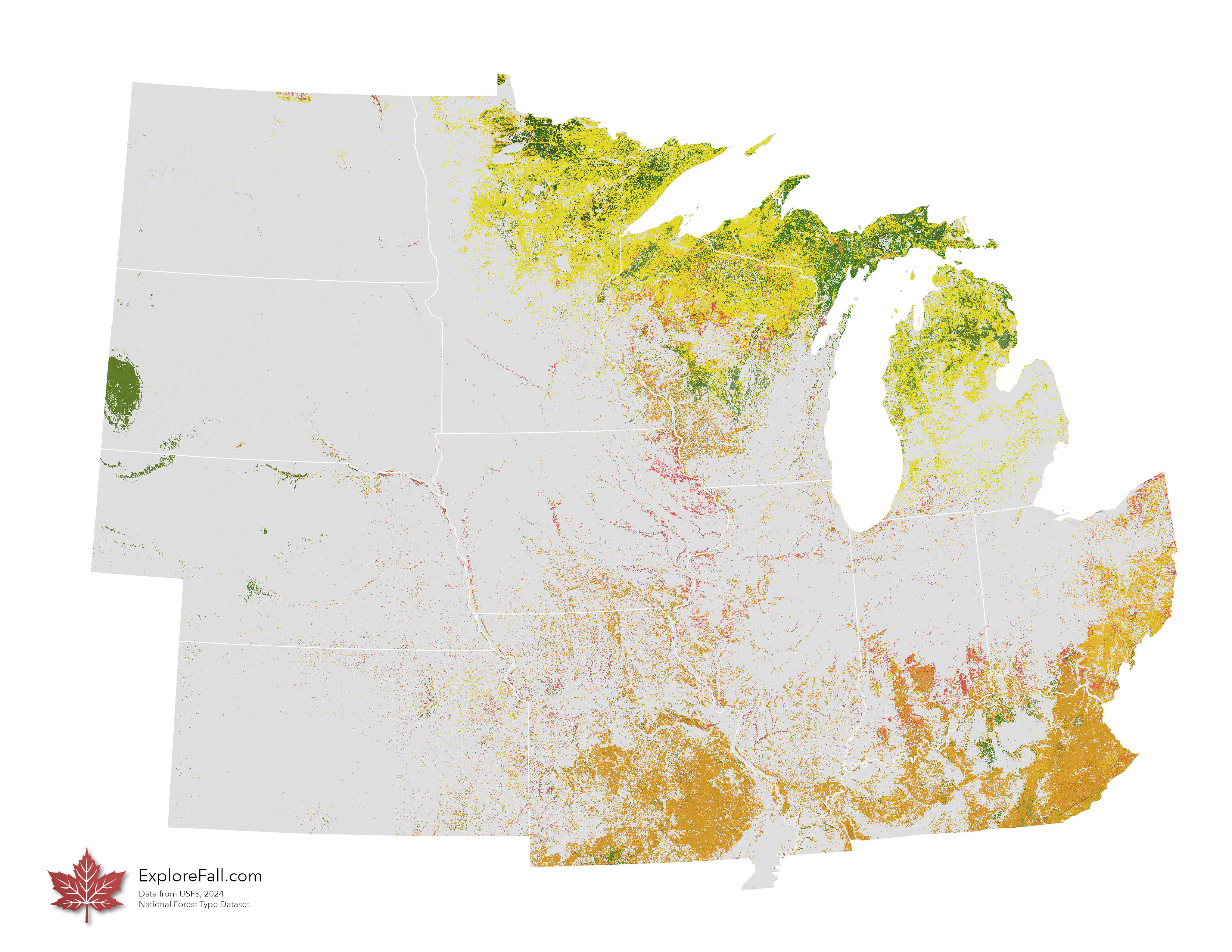
Although the Midwest is primarily known for its wide open agricultural plains and generally flat topography, rich deciduous forests still grow abundantly here. The best place to find fall color is in the northern forests along the Great Lakes and Canadian border. Widespread aspens, maples, and oaks turn a combination of yellows and oranges along softly rolling hills and lakes.
The southern Midwest states contain extensions of the Appalachian and Ozark oak and hickory forests. Generally, these forests turn dull orange or dark yellow in the autumn. Some river valleys, especially along the Ohio River and Mississippi River also have pockets of maple, basswood, and ash. These riverside forests are often multicolored and relatively open, meaning it’s easy to find a good woodland area with orange, yellow, and red autumn foliage.
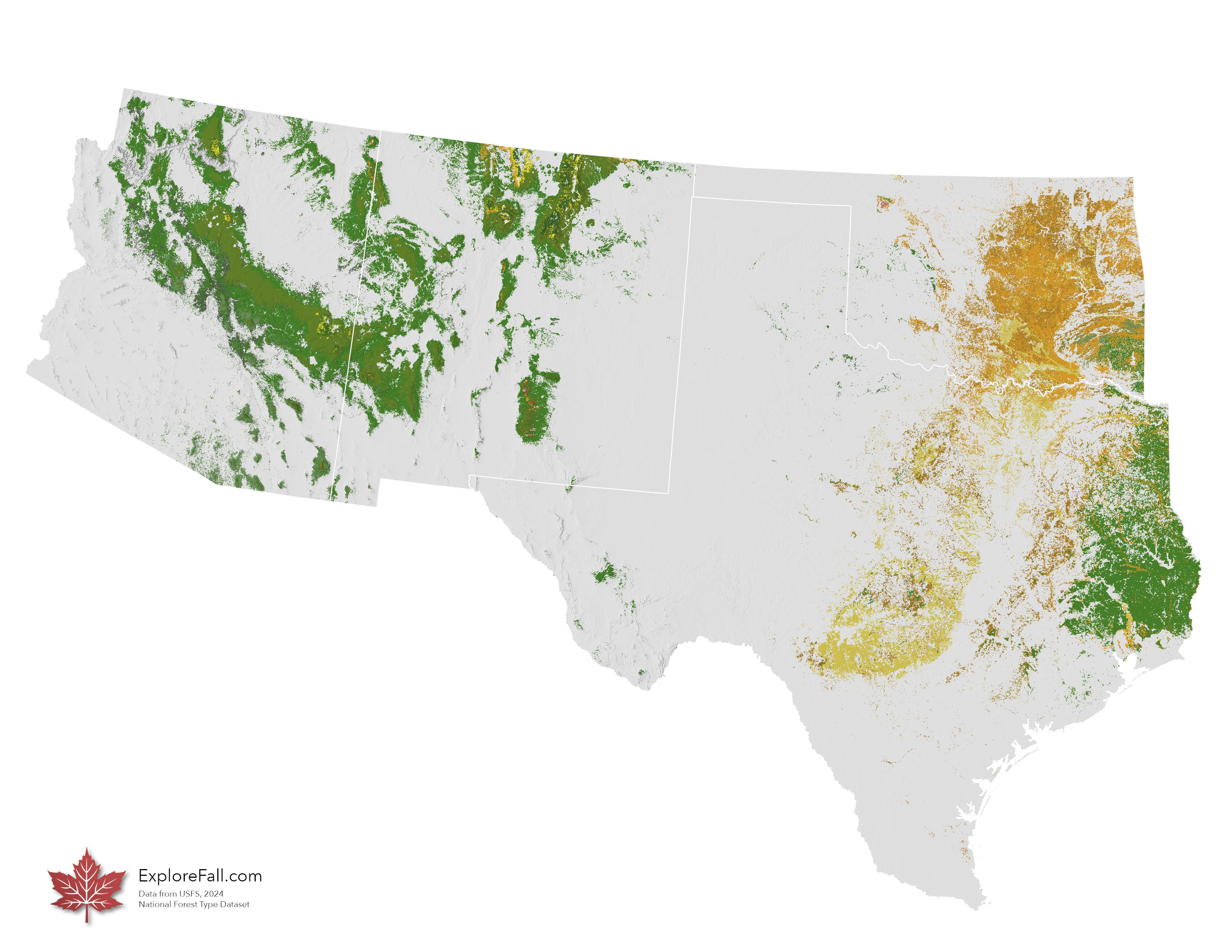
The deserts and high, dry mountains of the American Southwest aren’t known for their fall foliage shows, but pockets of pleasant and bright colors can still be found with some searching. The Great Plains and Hill Country of Oklahoma and Texas are generally covered by oak forests, scrubby and not particularly vibrant. Still, maples with flashes of red are able to hold on in some of the Hill Country canyons, and elm and sugarberry grow in the Ozarks of Oklahoma with nice yellows.
The mountains southwest of Arizona and New Mexico have an arid climate, but the Rockies still support some forests of aspens and oaks. There are some hidden pockets of maples too, even in the desert. Small forest areas in the Guadalupe Mountains turn bright yellows and oranges late in the season. You might even catch some snowliage (an overlap of snow and fall colors) in the Rockies of far northern New Mexico.
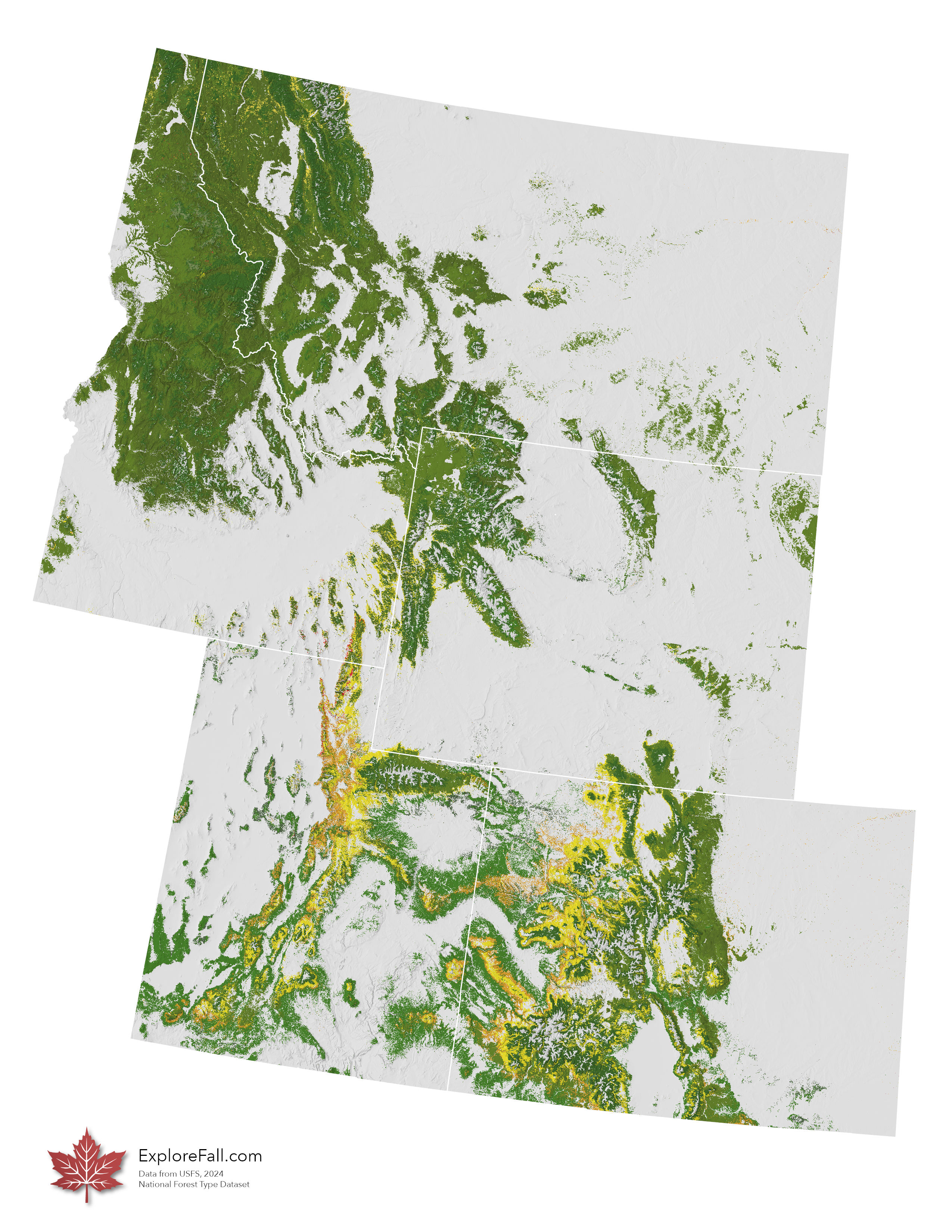
The Rocky Mountain states feature an incredible variety of landscapes and autumn colors to explore. Aspens are the clear highlight in the Rockies. The abundant, hearty trees send rivers of bright yellows through the open forests of the Rocky Mountains, offering a stunning contrast to the dark green pines and spruce under the snow-capped peaks in the fall. Colorado and Utah have the most aspens, especially on western-facing slopes of the mountain ranges. The aspens reach far north too. Splashes of color can easily be found in places like the Tetons of Wyoming, Glacier National Park in Montana, and the Sawtooths of Idaho. It’s a wonderful region to explore in the autumn. The colors are easy to find, and every new corner of a road will reveal new, vibrant vistas.
However, aspens aren’t the only deciduous species that changes color in the Rockies. Oak forests can be found on the high mesas and plateaus of southern Colorado and Utah, which turn shades of orange. Western and bigtooth maples are abundant in Central Utah as well. The Wasatch range in Utah is covered in these maple forests, and turns bright red and orange in the fall. If we had to pick a single location with the best fall colors in the entire country, it would be the high valleys of these western maples in Utah.
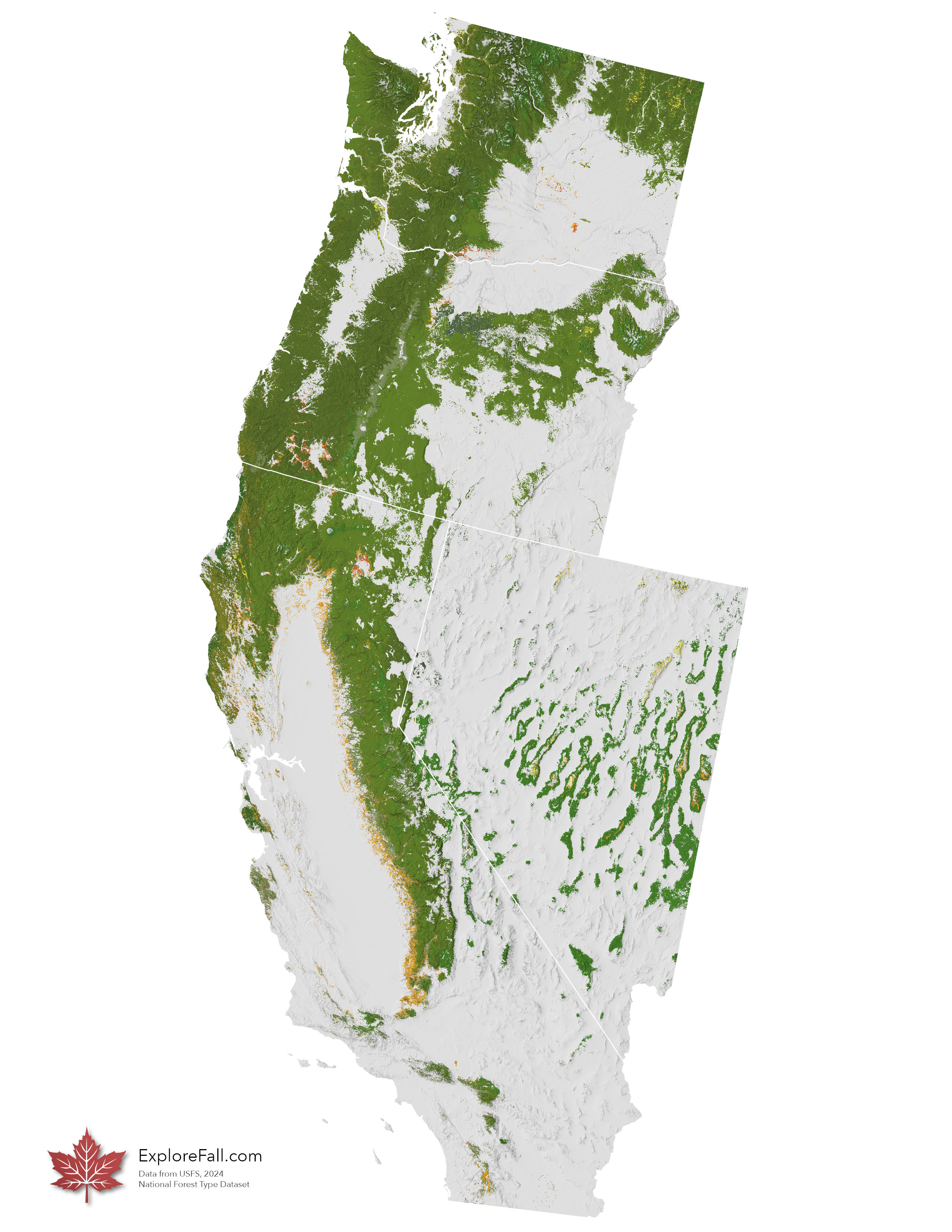
Rugged mountain chains and plentiful Pacific Ocean moisture create lush and diverse forests in the Pacific West. However, evergreens and conifers dominate these forests, resulting in a mostly mellow fall season. Yet, bright colors can still be found, particularly in the foothills.
The forests of the Sierra and Coastal mountain ranges are mixed with some oak woodlands. White and blue oaks here turn shades of dark yellow and orange. A few high elevation pockets, especially in the Sierras of Central California, also feature some aspens and larches.
Further north, the rainforests of the Cascades dominate the landscape in Oregon and Washington. These rainforests contain a mix of oaks and bigleaf maples, both of which turn dark yellow and orange. Bright yellow larches also grow in the North Cascades. The best fall colors of the entire Pacific West region occur in the dense pockets of larch trees, set against backgrounds of glacier-capped volcanoes and vast wilderness areas.